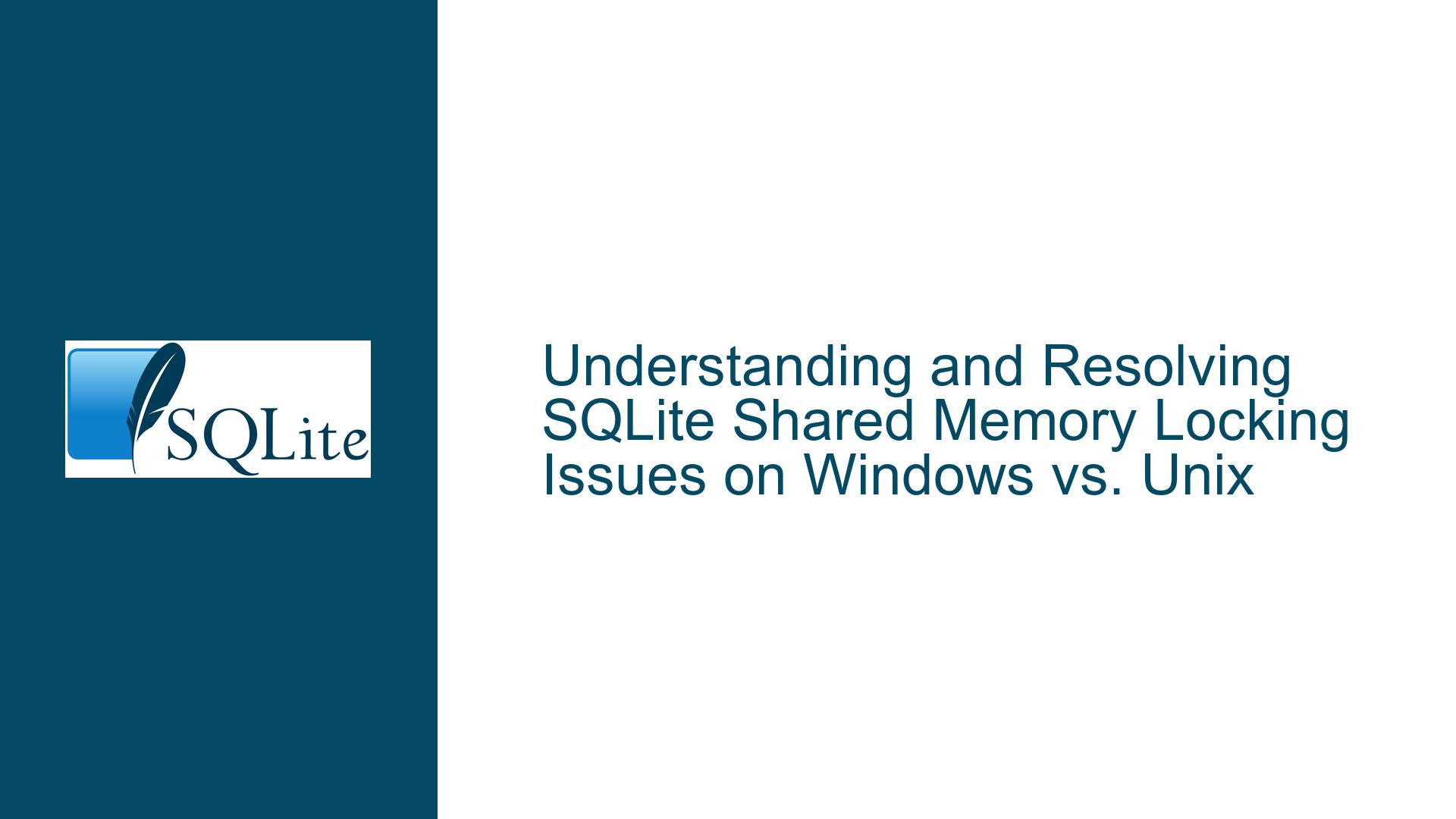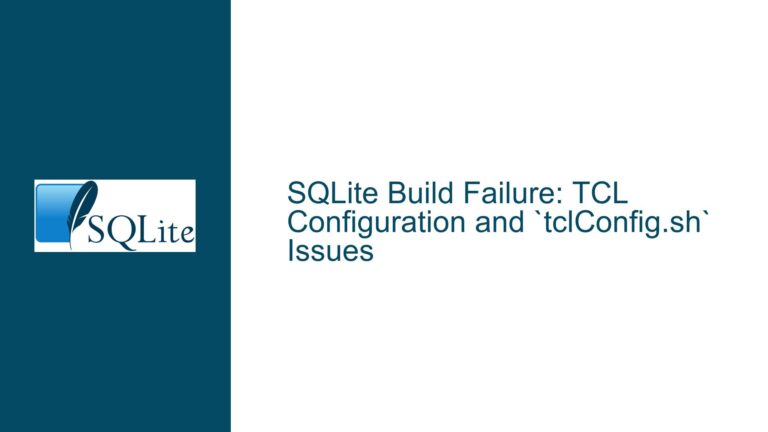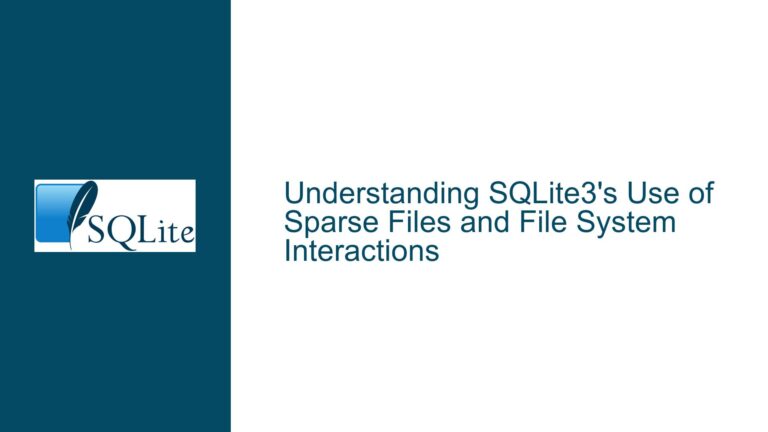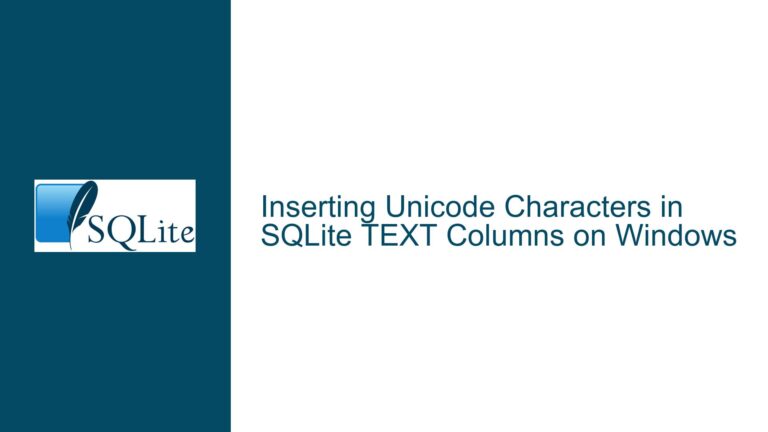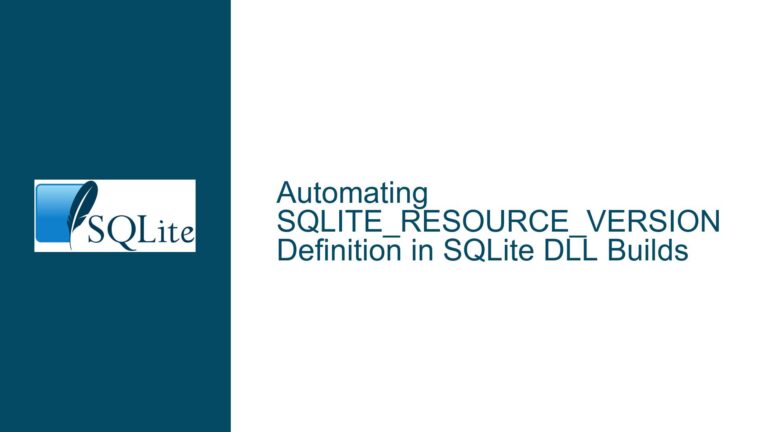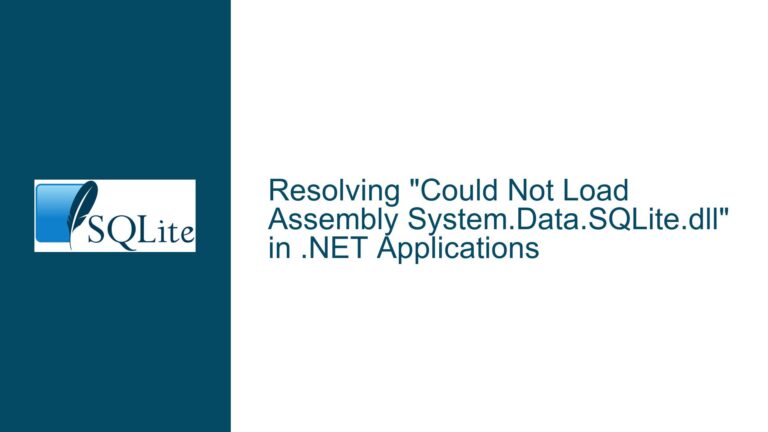and Resolving SQLite Shared Memory Locking Issues on Windows vs. Unix
Differences in Shared Memory Management Between os_unix.c and os_win.c
The core issue revolves around the differences in how SQLite manages shared memory and file locking between its Unix (os_unix.c) and Windows (os_win.c) implementations. These differences manifest in several key areas, including file handling, locking mechanisms, and memory mapping behavior. The primary concern is the inability to close connections before forking on Windows, which is likely tied to how shared memory files (-shm files) are managed and how locking levels are handled differently between the two operating systems.
The Unix implementation (os_unix.c) is designed with POSIX-compliant systems in mind, where file operations and memory mappings behave predictably. On the other hand, the Windows implementation (os_win.c) must account for the idiosyncrasies of the Windows file system, such as unreliable file closing, antivirus software interference, and differences in memory-mapped file behavior. These discrepancies can lead to subtle but critical issues, particularly when dealing with shared memory and locking in multi-process or multi-threaded environments.
One of the most notable differences is in the winUnlock() function, which drops all locking levels at once, unlike its Unix counterpart, unixUnlock(), which allows for gradual lowering of locking levels. This behavior can lead to unexpected results when transitioning between locking states, especially in scenarios where multiple processes or threads are accessing the same database. Additionally, the handling of -shm files, file truncation, and retry mechanisms for file operations differ significantly between the two implementations, further complicating cross-platform compatibility.
Why winUnlock() Drops All Locking Levels and Its Implications
The winUnlock() function in os_win.c is designed to handle file locking in a way that aligns with the constraints and behaviors of the Windows operating system. Unlike Unix, where file locking can be managed incrementally, Windows requires a more aggressive approach due to its file system’s handling of locks and the potential for conflicts with other processes or system-level software, such as antivirus programs.
When winUnlock() is called, it immediately drops all locking levels and returns to locking level 0. This behavior is necessary because Windows does not support the gradual reduction of locking levels in the same way that Unix does. On Unix, the unixUnlock() function can call posixUnlock() to lower the locking level step by step, allowing for finer control over lock transitions. However, on Windows, attempting to lower the locking level incrementally could result in undefined behavior or deadlocks, especially if other processes are contending for the same locks.
This difference in locking behavior can have significant implications for applications that rely on shared memory and multi-process synchronization. For example, if a process on Windows attempts to transition from a higher locking level to a lower one, it may inadvertently release all locks, potentially allowing other processes to access the database in an inconsistent state. This can lead to data corruption or other race conditions, particularly in high-concurrency environments.
Another factor contributing to this behavior is the way Windows handles file closing and memory-mapped files. On Windows, file truncation is a no-op if there are outstanding memory-mapped pages, which means that the operating system will not truncate a file until all memory mappings have been released. This can cause issues when trying to close or delete -shm files, as the file may remain open longer than expected, preventing other processes from accessing it.
Additionally, Windows employs a retry mechanism for file operations such as ReadFile, WriteFile, and DeleteFile to work around locking conflicts with antivirus software. While this mechanism improves reliability in the face of external interference, it can also introduce delays and complicate the locking process, especially when combined with the all-or-nothing approach of winUnlock().
Diagnosing and Resolving Shared Memory and Locking Issues on Windows
To address the shared memory and locking issues on Windows, it is essential to understand the specific behaviors of the os_win.c implementation and how they differ from os_unix.c. Here are the key steps to diagnose and resolve these issues:
1. Investigate Shared Memory File Handling
The first step is to examine how -shm files are managed on Windows. Unlike Unix, where the -shm file is removed before being closed in unixShmUnmap(), Windows may not allow the file to be removed if there are outstanding memory-mapped pages. This can lead to situations where the file remains open, preventing other processes from accessing it. To resolve this, consider modifying the winShmUnmap() function to ensure that all memory mappings are released before attempting to remove the file. This may involve adding additional checks or retries to handle cases where the file cannot be immediately closed.
2. Address File Truncation Behavior
On Windows, file truncation is a no-op if there are outstanding memory-mapped pages. This behavior can interfere with the proper management of -shm files, as the file may not be truncated when expected. To work around this, ensure that all memory mappings are released before attempting to truncate the file. This may require modifying the winTruncate() function to explicitly release memory mappings or to retry the truncation operation until it succeeds.
3. Modify Locking Level Transitions
The winUnlock() function’s behavior of dropping all locking levels at once can lead to issues when transitioning between locking states. To mitigate this, consider implementing a custom locking mechanism that allows for more granular control over lock transitions. This could involve maintaining a separate lock state within the application and using winUnlock() only when absolutely necessary. Alternatively, you could modify the winUnlock() function to support incremental lock reduction, though this would require careful testing to ensure compatibility with the Windows file system.
4. Handle Antivirus Interference
Windows’ retry mechanism for file operations is designed to work around locking conflicts with antivirus software, but it can also introduce delays and complicate the locking process. To minimize the impact of antivirus interference, consider increasing the number of retries or implementing a backoff strategy to reduce contention. Additionally, you may want to explore ways to temporarily disable antivirus scanning for specific files or directories, though this should be done with caution to avoid compromising system security.
5. Test and Validate Changes
Once the above modifications have been implemented, it is crucial to thoroughly test the changes to ensure they resolve the shared memory and locking issues without introducing new problems. This should include testing in high-concurrency scenarios, as well as on systems with different configurations and antivirus software. Pay particular attention to edge cases, such as abrupt process termination or system crashes, to ensure that the database remains consistent and recoverable.
By carefully analyzing the differences between the os_unix.c and os_win.c implementations and addressing the specific challenges posed by the Windows operating system, it is possible to resolve the shared memory and locking issues and achieve reliable cross-platform performance.
